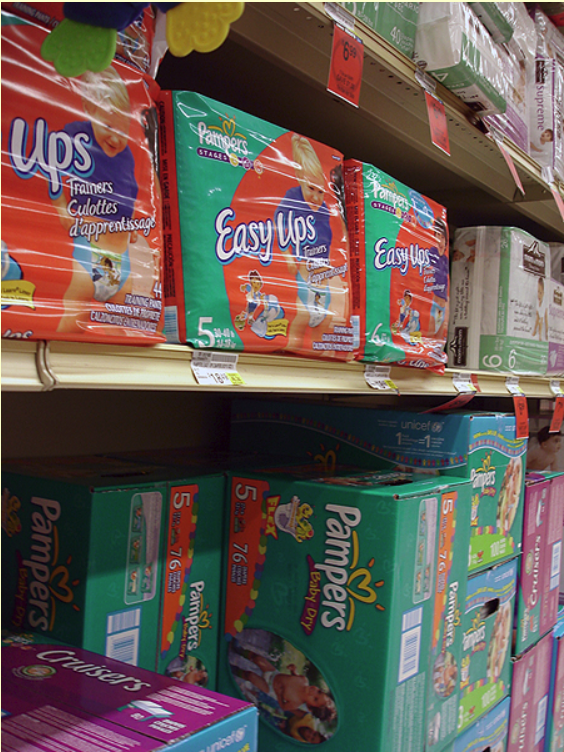Engineering Diapers
by Andy Boyd
Today, engineering the diaper. The University of Houston presents this series about the machines that make our civilization run, and the people whose ingenuity created them.
Marion O'Brien Donovan was born in 1917 to a family of inventors. Her father and his identical twin brother successfully designed and built lathes for making engine parts. Her mother died when the girl was only seven. As a result, she spent many hours at the family lathe factory surrounded by invention and creation; hours that made a deep and lasting impression on the young girl.
Donovan earned a degree in English literature at Rosemont College, and for a time worked as an assistant beauty editor at Vogue magazine. But when she married, she settled into her then-expected role as a 1940s homemaker and mother. And here she made a shocking discovery.
Newborns need changing -- a lot. It's common for newborns to go through more than a dozen diapers a day. And if the diaper's made of cloth, even the most diligent parents find themselves cleaning up after diapers that soak through.
The answer's to wrap the diaper in something water resilient. Rubber pants of the era were notorious for causing diaper rash. For Donovan, motherhood proved to be the necessity of invention. In a moment of inspiration, she took down her shower curtain. And with scissors and sewing machine, she created a comfortable, reusable wrap. She even added metal snaps so that safety pins weren't needed. Donovan had created the Boater, so named because it helped babies "stay afloat."

In 1949, Boaters debuted at Saks Fifth Avenue. They were a huge success. Donovan sold her Boater patents for a million dollars and went to work on her next invention: the disposable diaper. She wanted a paper diaper that didn't just hold moisture, but wicked it away from the baby's skin, and that required experimentation. She was ultimately successful in her design, but not in capturing the imagination of executives, who laughed at such an impractical idea. Apparently, they'd never had to wash diapers. The first commercially successful disposable diaper was introduced by Victor Mill at Proctor and Gamble almost a decade later. The product's name? Pampers.

Donovan never stopped inventing. She created the Big Hang Up, a "fabulous [closet]space saver." And the Zippity Do, an elasticized cord connected to the zipper on the back of a dress, making it easy for women to zip on their own. Ever noticed how flossing your teeth turns your fingers purple? So did Donovan. She patented the DentaLoop -- a loop of dental floss that eliminated the need for painful finger wrapping.
Donovan even returned to school at age forty-one, earning a degree in architecture from Yale. She was a remarkable woman -- a mother of three who managed to balance her love of invention with the rigid requirements of a 1940s homemaker. And she'll always be fondly remembered as the woman who engineered a better diaper.
I'm Andy Boyd at the University of Houston, where we're interested in the way inventive minds work.
(Theme music)
This episode is an updated version of episode 2464.
R. Thomas Jr. Marion Donovan, 81, Solver of the Damp-Diaper Problem. New York Times, November 18, 1998. Taken from the New York Times website: http://query.nytimes.com/gst/fullpage.html?res=980DE5DD1630F93BA25752C1A96E958260&sec=&spon=&pagewanted=1. Accessed February 17, 2009.
Marion Donovan (1917-1998). From the website of the Lemelson-MIT Program: https://lemelson.mit.edu/resources/marion-donovan. Accessed May 7, 2018.
Pictures by E. A. Boyd.